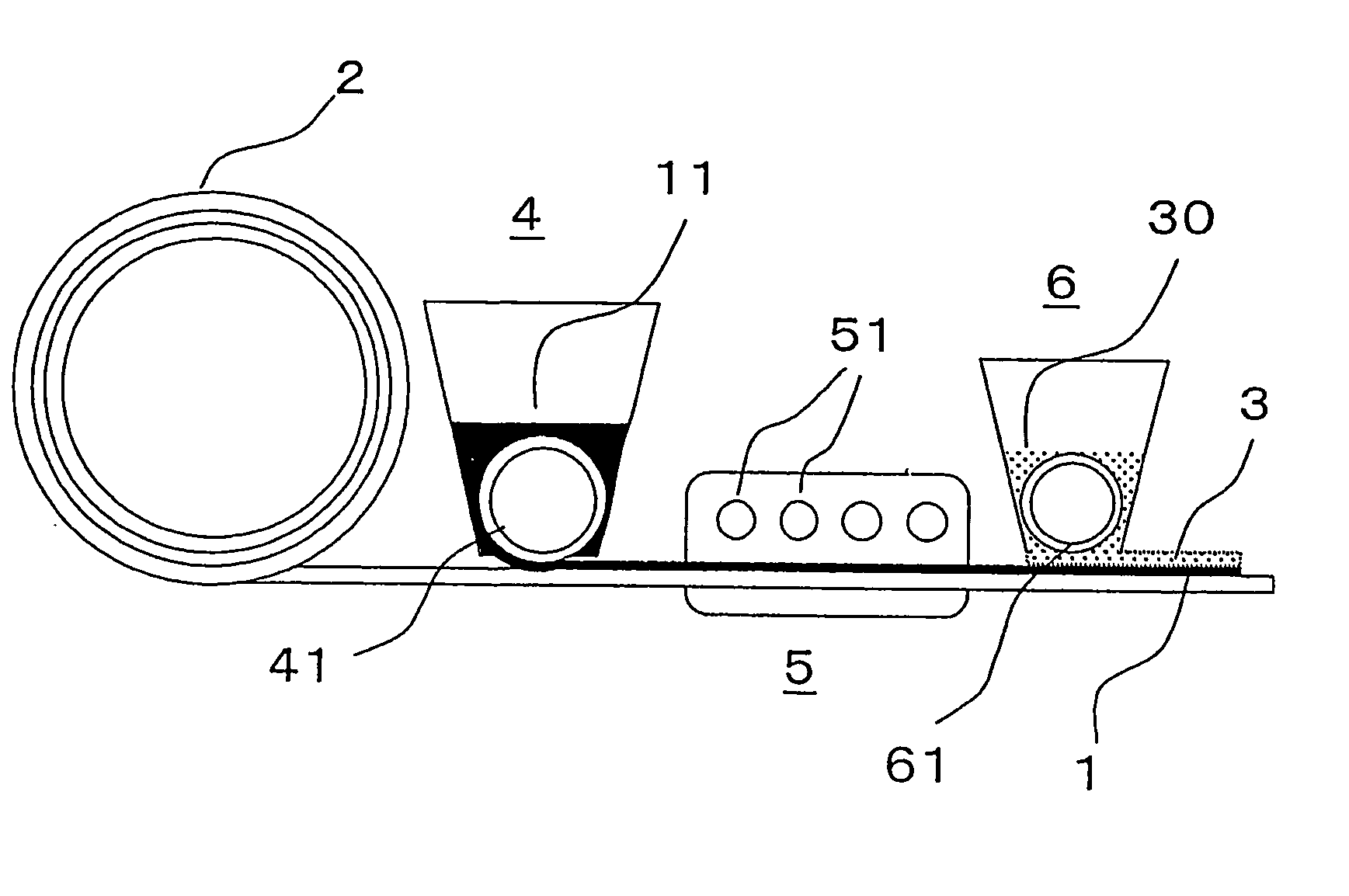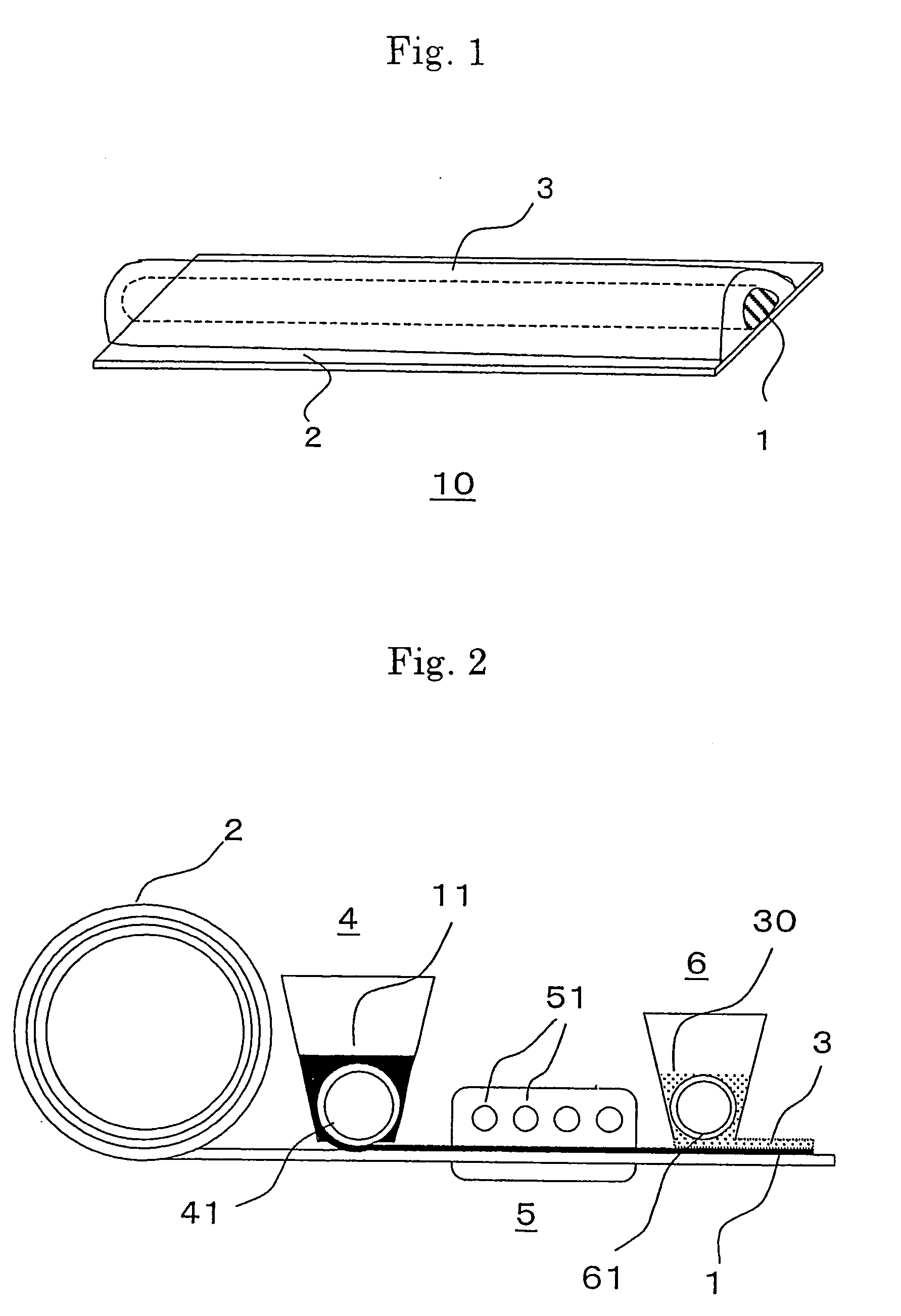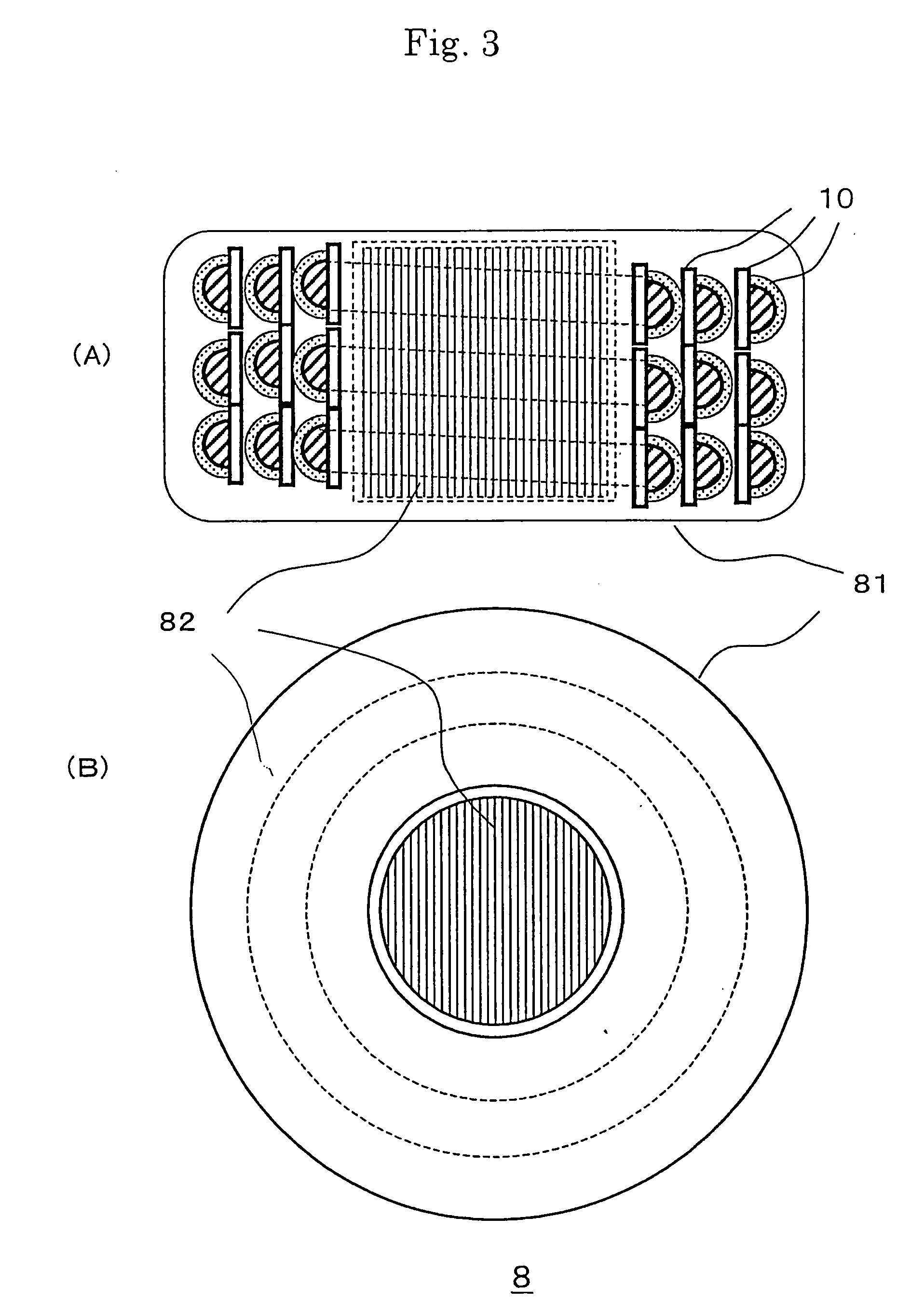Wire, method of manufacturing the wire, and electromagnet using the wire
- Summary
- Abstract
- Description
- Claims
- Application Information
AI Technical Summary
Benefits of technology
Problems solved by technology
Method used
Image
Examples
example 1
A wire was manufactured through a flow of a manufacturing method for a wire shown in FIG. 1. It should be noted that reference numerals in FIG. 1 may be used in the description of this example.
(A) Applying Step
(A-1) Preparation of Cross-Linking Application Liquid (Addition Step)
(1) Addition of Carboxyl Group . . . Synthesis of Carbon Nanotube Carboxylic Acid
30 mg of multi-layer carbon nanotube powder (purity: 90%, average diameter: 30 nm, average length: 3 μm, available from Science Laboratory Inc.) was added to 20 ml of concentrated nitric acid (a 60 mass % aqueous solution, available from KANTO KAGAKU) for reflux at 120° C. for 20 hours to synthesize carbon nanotube carboxylic acid. A reaction scheme of the above is shown in FIG. 4. In FIG. 4, a carbon nanotube (CNT) is represented by two parallel lines (same applies for other figures relating to reaction scheme).
The temperature of the liquid solution was returned to room temperature and centrifuged at 5,000 rpm for 15 ...
verification experiment
(Verification Experiment)
The current-voltage measurement of the wire obtained in Example 1 was performed to confirm that a current with a current density of 4×104 A / cm2 flowed (FIG. 7). The value is comparable to four times a critical current density of a superconductor (in general of the order of 10,000 A / cm2). An electromagnet was fabricated by using the wire. The wire was wound about an iron cylinder 82 with a diameter of 3 cm and a length of 10 cm at 50 turns / 10 cm to fabricate an electromagnet. A current of 0.1 A was passed through the wire, and the magnetic field strength directly above the electromagnet was measured with a gaussmeter to confirm that a magnetic field with a magnetic field strength H of 160 A / m was generated.
As described above, according to the present invention, the wire which is excellent in electric conductivity or mechanical properties and in which bonding between carbon nanotubes is established with reliability is obtained, so that characteristics of th...
PUM
 Login to View More
Login to View More Abstract
Description
Claims
Application Information
 Login to View More
Login to View More - R&D
- Intellectual Property
- Life Sciences
- Materials
- Tech Scout
- Unparalleled Data Quality
- Higher Quality Content
- 60% Fewer Hallucinations
Browse by: Latest US Patents, China's latest patents, Technical Efficacy Thesaurus, Application Domain, Technology Topic, Popular Technical Reports.
© 2025 PatSnap. All rights reserved.Legal|Privacy policy|Modern Slavery Act Transparency Statement|Sitemap|About US| Contact US: help@patsnap.com



